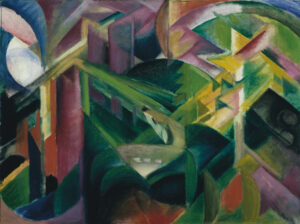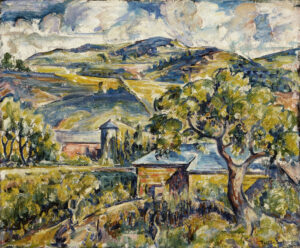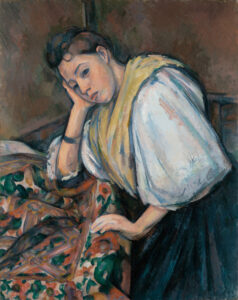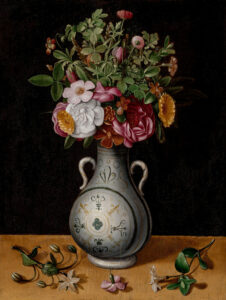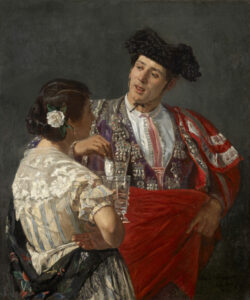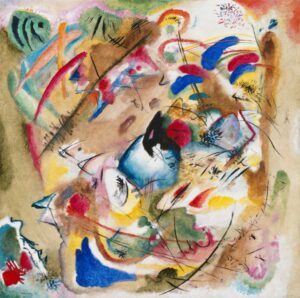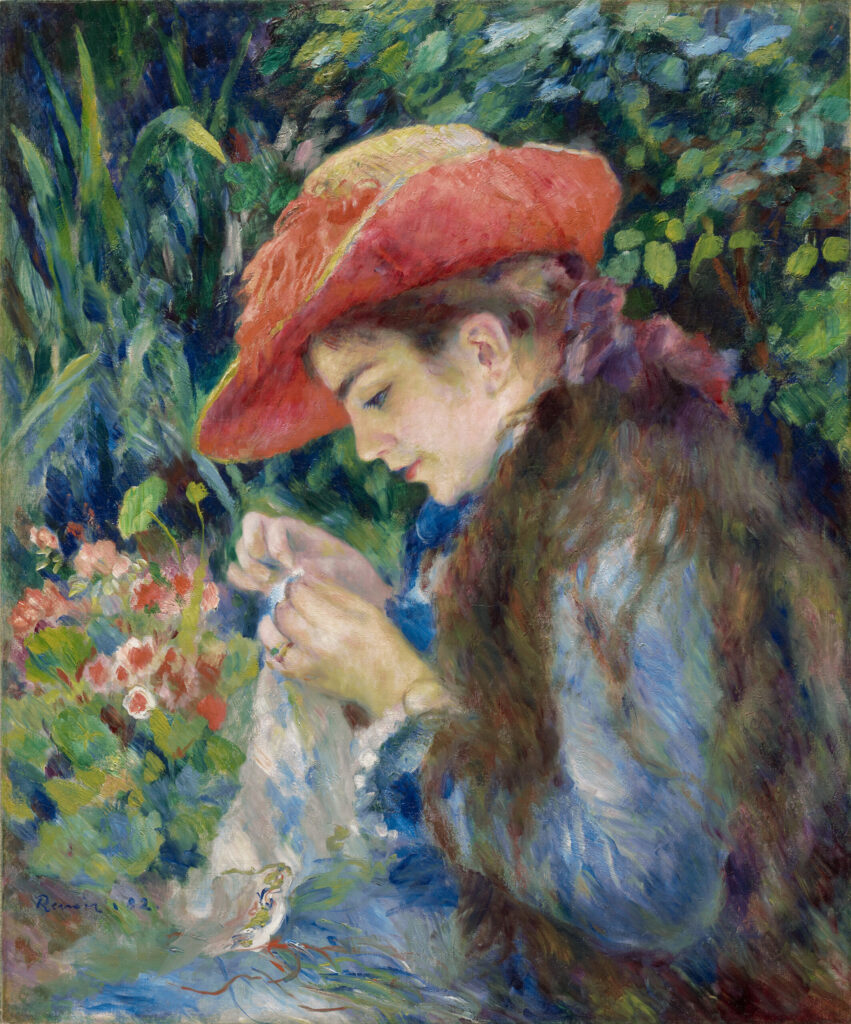
Marie-Thérèse Durand-Ruel Sewing, 1882. This oil on canvas perfectly illustrates Renoir’s stylistic maturity in the early 1880s. The artist depicts the daughter of the famous dealer Paul Durand-Ruel in an intimate pose, concentrated on her needlework.
The composition favors a close framing that isolates the model within a luxuriant vegetal setting. The technique reveals a characteristic duality: while the face and hands benefit from delicate modeling with subtle transitions, the environment dissolves into free and synthetic brushwork. The vermillion red hat chromatically structures the whole, contrasting with the dominant green of the foliage treated with rapid and expressive touches. This work testifies to Renoir’s technical evolution toward greater synthesis, heralding his “harsh” period. The choice of domestic subject matter fits within the Impressionist aesthetic favoring scenes of bourgeois daily life.
To explore further
- Marie-Thérèse Durand-Ruel Sewing, by Auguste Renoir, 1882
- 25 9/16 x 21 1/4 in. (64.9 x 54 cm)
- The Clark Art Institute, Williamstown
- https://www.clarkart.edu/ArtPiece/Detail/Marie-Therese-Durand-Ruel-Sewing
An emblematic figure of Impressionism, Pierre-Auguste Renoir (1841-1919) developed an art of joie de vivre and pictorial sensuality. Trained in Charles Gleyre’s studio alongside Monet, Sisley, and Bazille, he participated in the Impressionist exhibitions. His career evolved from the pure Impressionist period (1870s) toward a more classical manner called “harsh” (1880-1890), before returning to freer brushwork in his final works. Renoir particularly excelled in female portraiture and genre scenes, developing a warm palette dominated by pinks, reds, and golds. Supported by dealer Paul Durand-Ruel from 1872, he gained increasing recognition and lastingly influenced modern painting.

